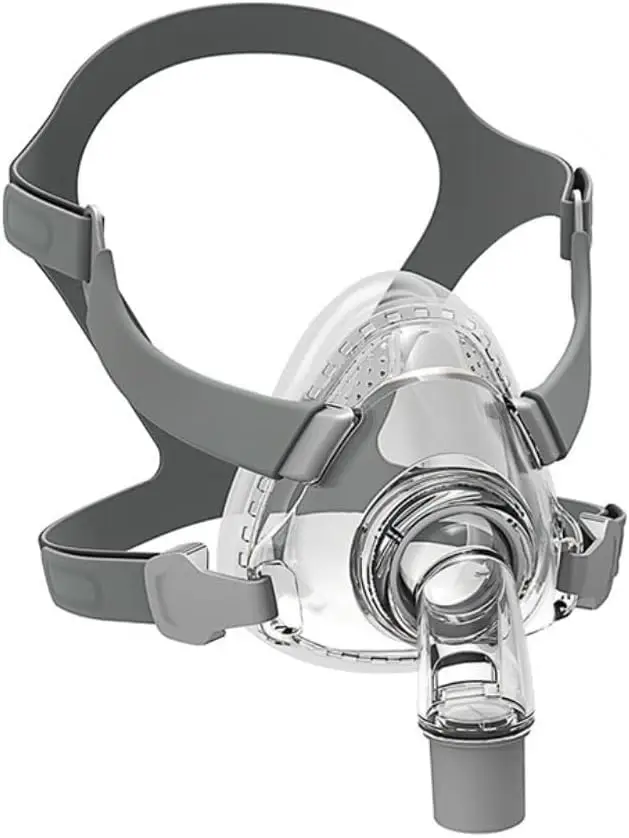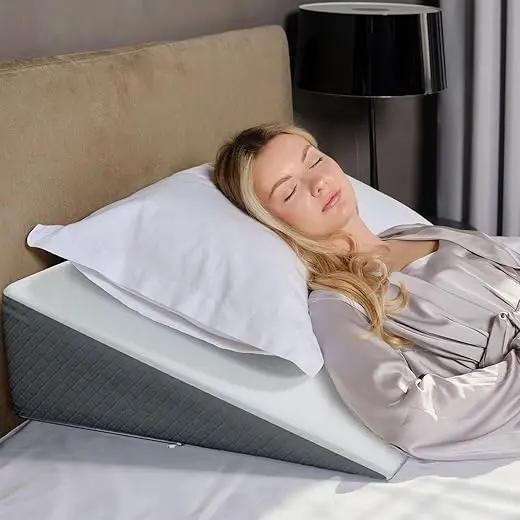Your CPAP mask is the most critical component of sleep apnea therapy—it’s where comfort meets effectiveness. The right mask can mean the difference between restful sleep and nightly struggles. With dozens of styles, sizes, and features available, finding your perfect match requires understanding your options and needs. This comprehensive guide walks you through everything about CPAP masks.
Why Your Mask Choice Matters
The Impact on Treatment Success
Studies show that 50% of CPAP therapy failures stem from mask-related issues. Your mask affects:
- Therapy Effectiveness: Proper seal ensures prescribed pressure delivery
- Comfort Level: Determines whether you’ll use CPAP consistently
- Sleep Quality: Wrong mask causes frequent awakenings
- Side Effects: Poor fit leads to skin irritation, dry eyes, air leaks
- Long-term Compliance: Comfortable patients use CPAP 2 hours more nightly
Common Mask Problems Leading to CPAP Failure
- Claustrophobia from oversized masks
- Pressure sores from poor fit
- Air leaks disturbing sleep
- Difficulty finding comfortable positions
- Noise from mask leaks
- Partner disturbance from exhaust air
Types of CPAP Masks: Complete Overview
1. Nasal Masks
Design: Triangular cushion covering nose only
Best For:
- Nose breathers
- Active sleepers who change positions
- Moderate to high pressure needs
- Patients wanting minimal facial contact
- Those who read or watch TV before sleep
Popular Models:
- ResMed AirFit N20
- Philips Respironics DreamWear
- Fisher & Paykel Eson 2
Pros:
- Less claustrophobic than full-face
- Easier to get proper seal
- Wide variety of styles
- Good for higher pressures
- Natural breathing feel
Cons:
- Not suitable for mouth breathers
- Can cause nasal bridge pressure
- May leak with facial hair
- Requires clear nasal passages
2. Full Face Masks
Design: Covers both nose and mouth
Best For:
- Mouth breathers
- Chronic nasal congestion
- Higher CPAP pressures (>15 cmH2O)
- Deviated septum patients
- Seasonal allergy sufferers
Popular Models:
- ResMed AirFit F20
- Philips Respironics DreamWear Full Face
- Fisher & Paykel Vitera
Pros:
- Works regardless of breathing route
- No chin strap needed
- Effective with congestion
- Accommodates mouth opening
Cons:
- More claustrophobic feeling
- Higher leak potential
- Can dry mouth more
- Bulkier profile
- May limit sleep positions
3. Nasal Pillow Masks
Design: Soft pillows seal at nostril openings
Best For:
- Minimal contact preference
- Facial hair/mustaches
- Glasses wearers
- Active sleepers
- Lower pressure requirements
Popular Models:
- ResMed AirFit P10
- Philips Respironics DreamWear Gel Pillows
- Fisher & Paykel Brevida
Pros:
- Minimal facial contact
- Clear field of vision
- Lightweight design
- Easy to fit
- Less likely to leave marks
Cons:
- Can irritate nostrils
- Limited to lower pressures
- Not for mouth breathers
- May cause nasal dryness
- Can dislodge easily
4. Hybrid Masks
Design: Combines features of different mask types
Best For:
- Failed with traditional designs
- Unique facial structures
- Mixed breathing patterns
- Bridge of nose sensitivity
- Seeking innovation
Popular Models:
- ResMed AirFit F30
- TAP PAP Nasal Pillow
- InnoMed Hybrid Interface
Pros:
- Addresses specific fit issues
- Innovative comfort features
- Reduced contact points
- Versatile breathing options
Cons:
- Limited selection
- May be more expensive
- Newer, less proven
- Specific use cases
5. Total Face Masks
Design: Covers entire face area
Best For:
- Extreme claustrophobia with traditional masks
- Facial irregularities
- Very high pressure needs
- Failed all other options
Example:
- Fisher & Paykel Oracle
Pros:
- No pressure points
- Accommodates any facial structure
- Very stable seal
- Unique solution
Cons:
- Large and bulky
- Limited availability
- Adjustment period needed
- May feel unusual
Sizing Your CPAP Mask: Getting It Right
Why Proper Sizing is Critical
An improperly sized mask causes:
- Air leaks reducing therapy effectiveness
- Pressure sores and skin breakdown
- Excessive tightening leading to pain
- Red marks and indentations
- Higher chance of therapy abandonment
Measurement Guidelines
Nasal Masks:
- Measure nose width at widest point
- Measure from nose bridge to bottom
- Check manufacturer sizing charts
- Consider nose shape (narrow, wide, prominent)
Full Face Masks:
- Measure from nose bridge to below lower lip
- Measure mouth width
- Account for jaw movement
- Consider facial fullness
Nasal Pillows:
- Measure nostril diameter
- Check nostril angle
- Assess nose base width
- Usually sizes: XS, S, M, L
Fit Testing Your Mask
Proper Fit Indicators:
- Comfortable with straps properly adjusted
- No gaps when CPAP is running
- Can open mouth (full face) without major leaks
- No pressure on nose bridge
- Eyes not affected by air leaks
The Two-Finger Rule: You should fit two fingers between strap and face
When to Try Different Sizes
Consider sizing change if:
- Red marks persist after 30 minutes
- Constant adjustments needed
- Leaks despite proper positioning
- Pressure sores developing
- Weight change of 10+ pounds
Advanced Mask Features
Cushion Technologies
Gel Cushions:
- Superior comfort
- Self-adjusting to face
- Reduced pressure points
- Higher cost
- May feel warm
Memory Foam:
- Conforms to facial contours
- Reduces leak potential
- Comfortable feel
- Requires replacement more often
Silicone:
- Standard material
- Durable and long-lasting
- Easy to clean
- Various firmness levels
Fabric/Cloth:
- Prevents skin irritation
- Breathable material
- Less stable seal
- Newer technology
Innovative Design Elements
Forehead Support Options:
- Adjustable vs. fixed
- Padded variations
- Some masks eliminate entirely
Exhalation Systems:
- Quiet dispersal patterns
- Directional exhaust
- Diffused air flow
- Partner-friendly designs
Quick-Release Features:
- Magnetic clips
- Easy bathroom trips
- Emergency removal
- Maintains settings
Modular Systems:
- Interchangeable cushions
- Multiple wearing options
- Customizable configurations
Mask Accessories and Enhancements
Comfort Accessories
Mask Liners:
- Fabric barriers prevent irritation
- Reduce red marks
- Absorb facial oils
- Disposable or washable
Strap Covers:
- Soft fabric padding
- Prevents hair tangling
- Reduces strap marks
- Enhanced comfort
Cushion Seals:
- Gecko nasal pads
- Seal enhancement strips
- Leak reduction aids
Stability Solutions
Chin Straps:
- Keeps mouth closed
- Reduces mouth leaks
- Various styles available
- May eliminate need for full-face
Hose Management:
- Hose holders
- Tethers and clips
- Overhead hangers
- Reduces mask pulling
CPAP Pillows:
- Cutouts for mask clearance
- Reduces pressure on mask
- Multiple sleep positions
- Better seal maintenance
Troubleshooting Common Mask Issues
Air Leaks
Causes and Solutions:
- Eye area leaks: Lower mask position, adjust top straps
- Mouth leaks: Consider full-face or chin strap
- Side leaks: Check for proper size, adjust straps evenly
- General leaks: Clean cushion, check for wear, proper assembly
Skin Irritation and Marks
Prevention Strategies:
- Loosen straps (tighter isn’t better)
- Use mask liners or barriers
- Rotate between two masks
- Apply moisturizer before bed (let dry)
- Consider different cushion material
Comfort Problems
Solutions by Issue:
- Claustrophobia: Start with nasal pillows, practice during day
- Bridge pressure: Adjust forehead support, try different style
- Nostril soreness: Alternate nostrils, use saline gel
- Dry mouth: Add humidification, check for mouth breathing
Mask Maintenance and Replacement
Daily Cleaning Routine
- Disassemble mask components
- Wash cushion with mild soap
- Rinse thoroughly with water
- Air dry on clean towel
- Wipe down headgear (weekly)
When to Replace Components
Cushions/Pillows:
- Every 1-3 months
- When seal degrades
- Visible wear or tear
- Persistent leak issues
Headgear:
- Every 6 months
- Lost elasticity
- Velcro not holding
- Stretched out
Complete Mask:
- Annually with regular use
- Frame cracks or breaks
- Multiple components wearing
Insurance Coverage for Replacements
Typical Medicare/insurance schedule:
- Cushions: 2 per month
- Headgear: Every 6 months
- Complete mask: Every 3 months
- Check your specific plan
Selecting Your First Mask
Step-by-Step Process
- Identify Breathing Pattern: Nose, mouth, or both
- Consider Sleep Position: Side, back, stomach, combination
- Assess Comfort Priorities: Minimal contact vs. stability
- Review Lifestyle Factors: Glasses, reading, facial hair
- Try Multiple Options: Most suppliers offer trials
- Start with Popular Models: Higher success rates
- Be Patient: Allow 2-week adjustment period
Trial Programs and Returns
What to Look For:
- 30-day return policies
- Multiple mask trials
- Exchange options
- Fit guarantees
- Insurance compatibility
The Future of CPAP Masks
Emerging Technologies
Custom 3D-Printed Masks:
- Facial scanning technology
- Perfect individual fit
- Reduced pressure points
- Higher initial cost
Smart Masks:
- Integrated sensors
- Automatic leak adjustment
- Sleep position monitoring
- Data collection
Alternative Interfaces:
- Oral CPAP devices
- Nasal EPAP technology
- Maskless CPAP development
Making Your Final Decision
Key Questions to Answer
- How do I primarily breathe during sleep?
- What’s my usual sleep position?
- Do I have facial hair?
- Am I claustrophobic?
- Do I need glasses for bedtime activities?
- What’s my CPAP pressure requirement?
- Do I have any facial sensitivities?
Red Flags to Avoid
- Suppliers pushing one brand exclusively
- No trial or return period
- Extremely cheap, non-branded options
- Used or refurbished cushions
- High-pressure sales tactics
Conclusion
Your CPAP mask is not just equipment—it’s your nightly companion in treating sleep apnea. The perfect mask exists for everyone, but finding it requires patience, proper fitting, and sometimes trying multiple options.
Remember that mask preference is highly individual. What works perfectly for others might not suit you. Don’t get discouraged if your first choice isn’t ideal. With dozens of options available and new innovations emerging regularly, you will find a mask that provides both effective therapy and comfortable sleep.
Invest time in proper selection and fitting. Work with experienced providers who offer trial programs. Be willing to experiment with different styles. Your commitment to finding the right mask will pay dividends in better sleep, improved health, and successful long-term CPAP therapy.
The journey to finding your perfect CPAP mask might take some effort, but the destination—restful, healthy sleep—is worth every step.
This guide provides general mask selection information. Always work with your healthcare provider and DME supplier for personalized fitting and recommendations based on your specific needs and facial structure.

